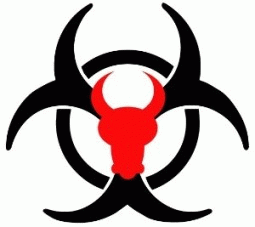USDA Continues to Expose U.S. to Unnecessary Risk
17th BSE-Infected Cow Is Canada's 10th Born after March 1, 1999
Billings, Mont. On Friday, May 15, 2009, the Canadian Food Inspection Agency (CFIA) announced yet another case of bovine spongiform encephalopathy (BSE) � this time in an 80-month-old Alberta dairy cow. This cow would have been born in 2002, making her the 10th BSE-positive cow young enough to be exported to the United States. In November 2007, the U.S. Department of Agriculture (USDA) implemented a rule to allow the importation of higher-risk Canadian cattle � cattle over 30 months (OTM) of age � into the United States, as long as they were born after March 1, 1999.
USDA's risk modeling for its November 2007 rule (OTM Rule), which allows the importation of OTM Canadian cattle into the United States, predicted that the U.S. would import as many as five BSE-infected cattle per year based on the expected importation of only 75,000 OTM Canadian cattle during the first year of the rule's implementation. However, the U.S. actually imported well over twice this number Â? nearly 200,000 OTM cattle Â? from Canada in 2008, the first year of the OTM Rule. Currently, the U.S. is importing OTM Canadian cattle at an even higher rate in 2009, with approximately 72,000 imports of OTM cattle imported through May 2.  Â
"There are no restrictions on these higher-risk OTM cattle when they enter the United States," said R-CALF USA President/Region VI Director Max Thornsberry, a Missouri veterinarian who also chairs the group's animal health committee. "These higher-risk cattle are allowed to commingle with the U.S. herd, enter the U.S. food supply and enter the non-ruminant U.S. animal feed system. USDA has an absolute duty to protect the U.S. cattle herd as well as U.S. consumers from the introduction of BSE that is known to be occurring under the OTM Rule, and R-CALF is again calling on USDA to immediately rescind the OTM Rule."
When USDA implemented its OTM Rule, the agency stated that Canada's BSE prevalence was continuously decreasing and that Canadian cattle born after the export eligibility date of March 1, 1999, would "have an extremely low likelihood of exposure to BSE." Since that time, Canada has detected six additional BSE-positive cattle under very limited testing, and five of these cases were born Â? and therefore exposed to BSE Â? years after March 1, 1999.
Since 2003, there have been 17 cases of BSE detected in Canadian-born cattle. In addition to its Canadian-born cases, Canada also detected a case of BSE in 1993 in a cow imported from Great Britain.   Â
"Since implementation of the 2007 OTM Rule, Canada has detected one positive BSE case for about every 10,000 head of cattle tested, which represents a rate of detection greater than several European countries considered to be of high risk for BSE," said R-CALF USA CEO Bill Bullard.
"This statistic is even more alarming when one considers that Canada tested fewer than 49,000 cattle in 2008, which is a decrease of nearly 10,000 head when compared to testing conducted in 2007," he emphasized. "Canada's 2009 testing rate is even lower, with Canada testing more than 5,000 fewer animals in the first two months of 2009 than it did in 2008."
Bullard said that Canada is the only country in the world that does not have a mandatory BSE testing program that continues to detect BSE in cattle born after the implementation of a feed ban.
"Canada's BSE testing is voluntary, and based on the significant numbers of BSE-positive cattle detected under very limited testing, Canada's BSE prevalence rate is likely well above USDA's estimate," he pointed out. "The result is that the United States is assuming a much higher risk for the introduction of BSE than the negligible risk that USDA claims."
R-CALF USA, the South Dakota Stockgrowers Association, five national consumer groups and several individual ranchers have a pending lawsuit against USDA's OTM Rule. As a result of this litigation, the court ordered USDA to reopen the OTM Rule and "to revise any provisions of the OTM Rule it deems necessary."
"We are counting on Agriculture Secretary Tom Vilsack to take appropriate action to protect our cattle herd and our consumers by immediately overturning the OTM Rule that is allowing the continuous introduction of BSE into the United States," Thornsberry said.
Click here to read R-CALF USA's letter to Secretary Vilsack.
R-CALFUSA (Ranchers-Cattlemen Action Legal Fund, United Stockgrowers of America) is a national, non-profit organization dedicated to ensuring the continued profitability and viability of the U.S. cattle industry. R-CALF USA represents thousands of U.S. cattle producers on trade and marketing issues. Members are located across 47 states and are primarily cow/calf operators, cattle backgrounders, and/or feedlot owners. R-CALF USA directors and committee chairs are extremely active unpaid volunteers. R-CALF USA has dozens of affiliate organizations and various main-street businesses are associate members. For more information, visit www.r-calfusa.com or, call 406-252-2516.





